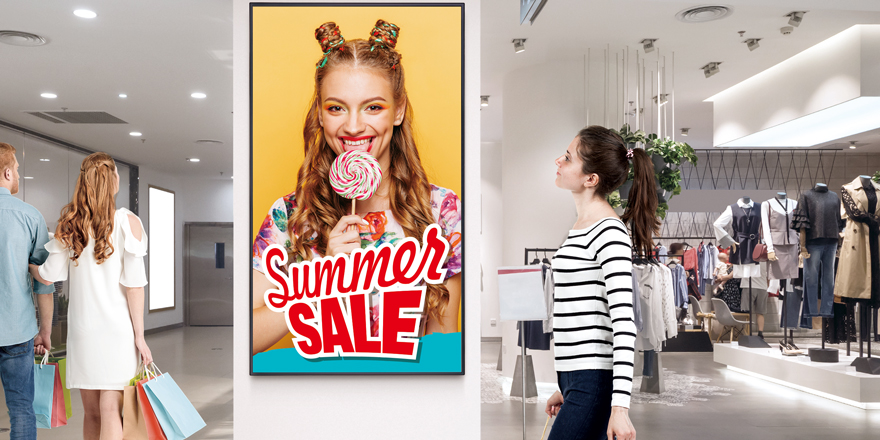If you’re considering outfitting your business with digital signage, congratulations. You’re on your way to improving your customer/visitor experience, increasing your brand retention and attracting more business.
Determining the type of content you’ll want to display will be helpful before you purchase the displays. Today digital signage is being used by all kinds of businesses and organizations for numerous purposes, but some considerations can apply across the board:
Who will be the audience for your message?
Where inside or outside of your business will they be?
What message is appropriate for them in those areas?
Will the message need to change depending on the area they’re in?
Where in each area is the optimal location for displaying the message?
The “where” is key to an effective digital signage content strategy. You’ll need to map the layout of your building and consider what people do in the various areas, and what you’ll want to communicate to them in those areas. Keep in mind that the best digital signage content engages the audience where they are, makes their immediate experience easier and richer, and encourages them to take action.
Consider what a point-of-purchase display does, and then replace the word “purchase” with what they’ll be doing.
For example, point of “entry.” In entryways and lobbies of large buildings you can provide wayfinding information to help people get to where they need to be, without having to flag someone down and ask for directions.
Point of “waiting.” In a waiting area relevant infotainment is often used to give people something to do and to reduce perceived wait time. In a physician’s waiting room health and wellness tips are often shown, as are scenic imagery and works of art to help put people at ease.
Point of “interest.” Digital billboards attract college students on campus and update them to local happenings. Outdoor kiosks in busy cities provide a wealth of information to tourists and locals alike. Retailers can use beacons to send additional information or a special discount to customers looking at specific products. Museums use digital signage to provide introductions to popular exhibits, and touchscreens can enable deeper dives.
Point of “exit.” Hotels use digital signage in lobbies to display local area restaurants and attractions, transportation options and real-time weather.
Once you’ve determined what kind of content you’ll be displaying and where, that will help you select the type of displays you’ll need, i.e., outdoor-specific signage or kiosks, indoor video walls, single large-format displays, stretched displays, transparent displays, touchscreen displays or small displays.
Finally, take a walk around with a digital signage professional and scout out locations for signage placement. Digital signage pros can help identify locations to ensure the most eyes see your message, facilitate installation of mounts and cables, and not obstruct foot traffic or interfere with other safety guidelines.
All of this might sound pretty obvious, but it’s surprising how many times what starts out with good intentions ends up with digital signage that goes unnoticed or content that is ignored for lack of immediate value.
